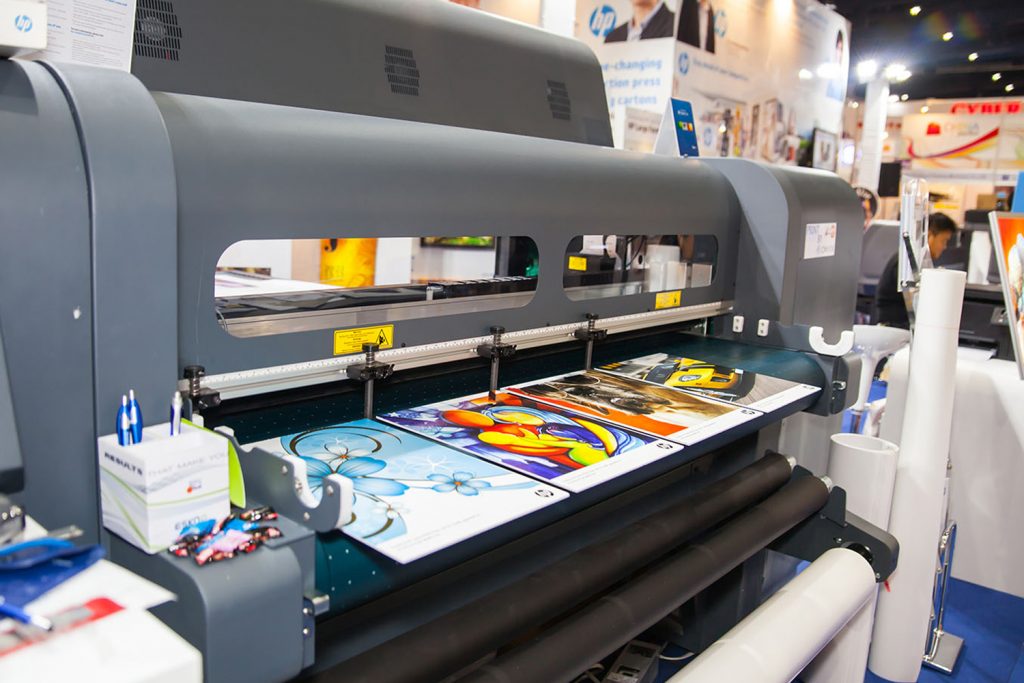How Are Promotional Products Printed? The top 5 ways and their pros and cons

If you’ve ever wondered how a logo is printed on a mug or a bag, look no further. Unsurprisingly, there are lots of ways promotional products are printed. Each type gives your product a different look and feel. The availability of some printing methods depend on the shape or texture of your product. For other methods, the decision is made by the detail of the logo.
Below, we discuss five ways we have your promotional products printed and the advantages and drawbacks of each one.
Pad Printing
In pad printing, a silicone pad is pressed onto an inked plate etched with your design. Fun fact! The plate is called a cliché. Next, the now inked pad is pressed onto the product, transferring the image from the plate to the product like a stamp.
Pros: It’s a simple method, but gives quality, detailed results on textured and complex three-dimensional surfaces.
Cons: For multi-coloured prints, each colour must be applied separately, slowing the process. Pad printing is also messy and requires harsh chemicals to clean the pad between colours and jobs.
Screen Printing
Screen printing is often used for large, flat surfaces like fabric or signage. The printers fasten a stencil of your design to a screen. The coloured ink is then forced through it with a blade or squeegee. Your promotional product is now printed! In screen printing, as well as pad, each colour is applied individually and uses a new screen. At the end, you’ll have results like Andy Warhol’s Marilyn Monroe prints.
Pros: Screen printing is useful for quick printing on large areas.
Cons: Set up and cleaning can be time-consuming. Also, ink can be transferred from product to product and a detailed design is difficult to achieve.
Sublimation Printing
Sublimation printing transfers a digitally printed image on to a product. First, technicians print your design onto special sublimation paper. Next, it is aligned to your product and they are both put through a heat press. Inside the heat press the dye on the sublimation paper becomes a gas and adheres to the individual fibres of the product. The ugly sweater vests from Peters Ice Cream are a perfect example.
Pros: A full colour spectrum is possible with sublimation printing. Even without the need to change screens, plates or pads. Because there is no need for screens, plates or pads, it’s also great for variable data printing. As well as this, sublimation prints are durable because the dye becomes a part of the fabric rather than sitting on top.
Cons: Sublimation dye is expensive and will only show well on white or light-coloured products. Only polyester or hard, poly-coated products can withstand the heat needed for sublimation printing, limiting your product choices.
Leon explains it in more detail below:
Heat Transfer
Heat transfer printing is similar to sublimation in that it uses transfer paper, heat and pressure to print your design onto your product. However, unlike sublimation, a heat transferred design will only fuse to the external layer of your product.
Pros: In the digital age, heat transfer printing can be done at home with transfer paper and an iron. It is a very simple method. Your designs can be printed on light or dark-coloured materials (polyester, cotton or a blend) and it will not affect the final colours of the print.
Cons: The transfer paper must be trimmed before being pressed onto the product. This can be time-consuming but it prevents an unsightly border of transfer around your design. They can also crack and peel over time because they sit on top of the product.
Digital Printing
Digital printing on promotional products happens in much the same way as your printer at home, except bigger. Our experts place your products on a tray that carries them through the printer. Inkjets transfer the ink on to the products, they are dried and emerge printed with your design.
Pros: Digital printing allows a full colour design with gradients. The can be achieved from common image files, like PDF or TIFF. Because it is a simple process, set up time is short and only one pass is needed to print the entire image.
Cons: A digital print’s nature means that PMS colours cannot always be matched. Metallic and fluorescent colours are also not possible. Finally, compared to other forms of printing, digital prints can sometimes be less vibrant or precise.
How else are promotional products printed?
As well as those mentioned, a number of other specialised printing methods are also available. Each one has its strengths. Luckily, in our technologically advancing world, all of them are available for your promotional products. You can be assured that whatever your job is, we will make sure the most suitable printing method is chosen to make it the best it can possibly be.
We hope this article answered any questions you had about printing promotional products. If you have any other questions about promotional products and the production process, comment below or send us an email.
Or if you need help choosing the right promotional product for your brand, try our Merch Matcher™.


